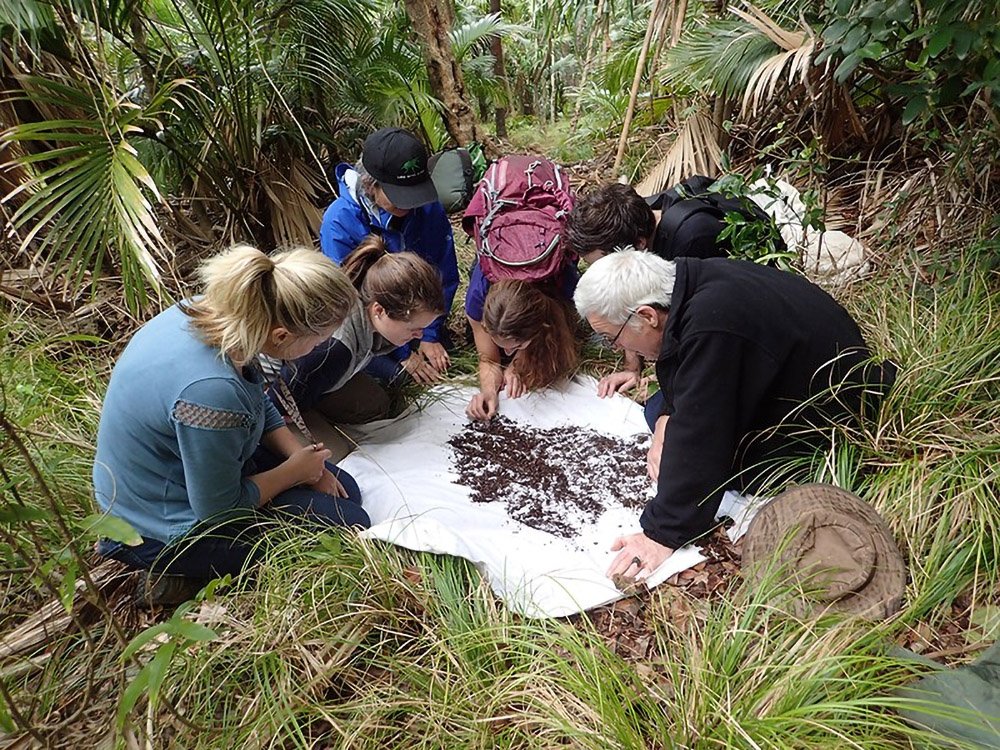Citizen scientists and rare beetles: a win win for everybody
There's a proverb about repairing lightbulbs that works well for rare beetles too many hands make light work.

© Lord Howe Island Museum
Here I talk about a recent excursion to Lord Howe where citizen scientists were employed as extra eyes (and hands) in the search for rare beetles.
Lord Howe Island is one of those fantastic places that every naturalist should visit. It has the lot, including many rare species of large beetles. From the records we have, some of those species are very rare indeed. The study of these species is important for a number of reasons, such as, they might be dying out, they might recover if rats are eradicated, or they might be useful for monitoring climate change.
I was recently privileged to spend a week on Lord Howe working with Ian Hutton of the Lord Howe Island Museum. We organised a cheerful band of volunteer citizen scientists into beetle hunters, particularly looking for large beetles on the dunes and large beetles in rotting wood.
We showed them pictures of the large beetles we were looking for and encouraged them to include fragments. Lord Howe has a small fauna, small enough to allow identification of fragments. And a fragment is just as useful a record as a whole animal.
We then took the citizen scientists out to various sites on the island for 2-3 hours of ‘beetling’. Everyone got a bottle to put things in and we were on hand to tell them about what they found. Everyone 'had a go'.
The results were spectacular. Those extra eyes (and hands) meant that much more was found than we had hoped. The citizen scientists discovered a new jewel beetle and the leg of a rare scarab. We hope that this preliminary trial of citizen science will be regularly repeated, allowing long term monitoring of the fabulous large beetles of Lord Howe.
Dr Chris Reid, Research Scientist, AMRI
More Information
- Reid, Chris A.M. AND Ian Hutton. 2018. Citizen science and the art of discovery: new records of large Coleoptera from Lord Howe Island, July 2018. Technical Reports of the Australian Museum, Online (in preparation)










